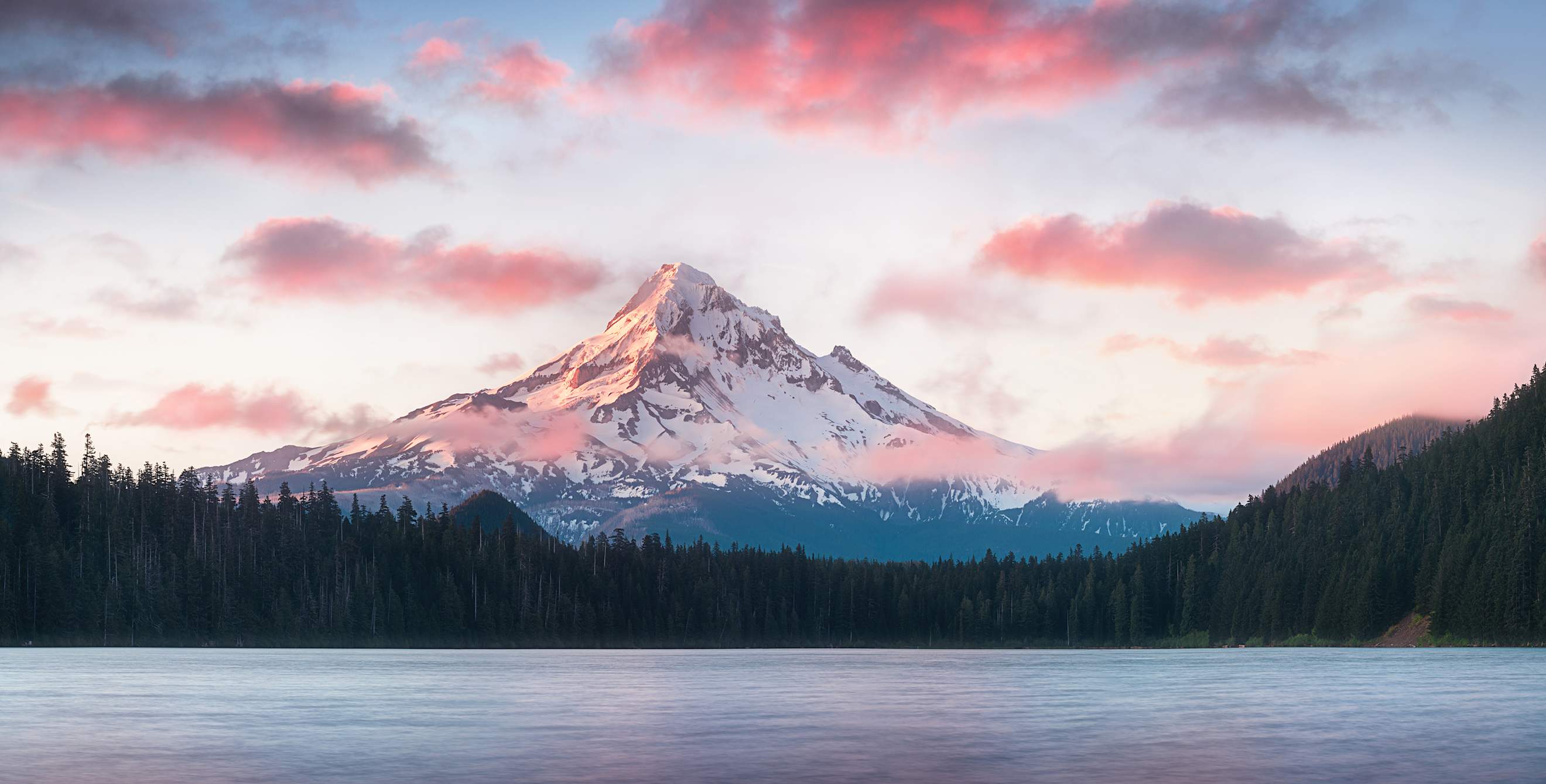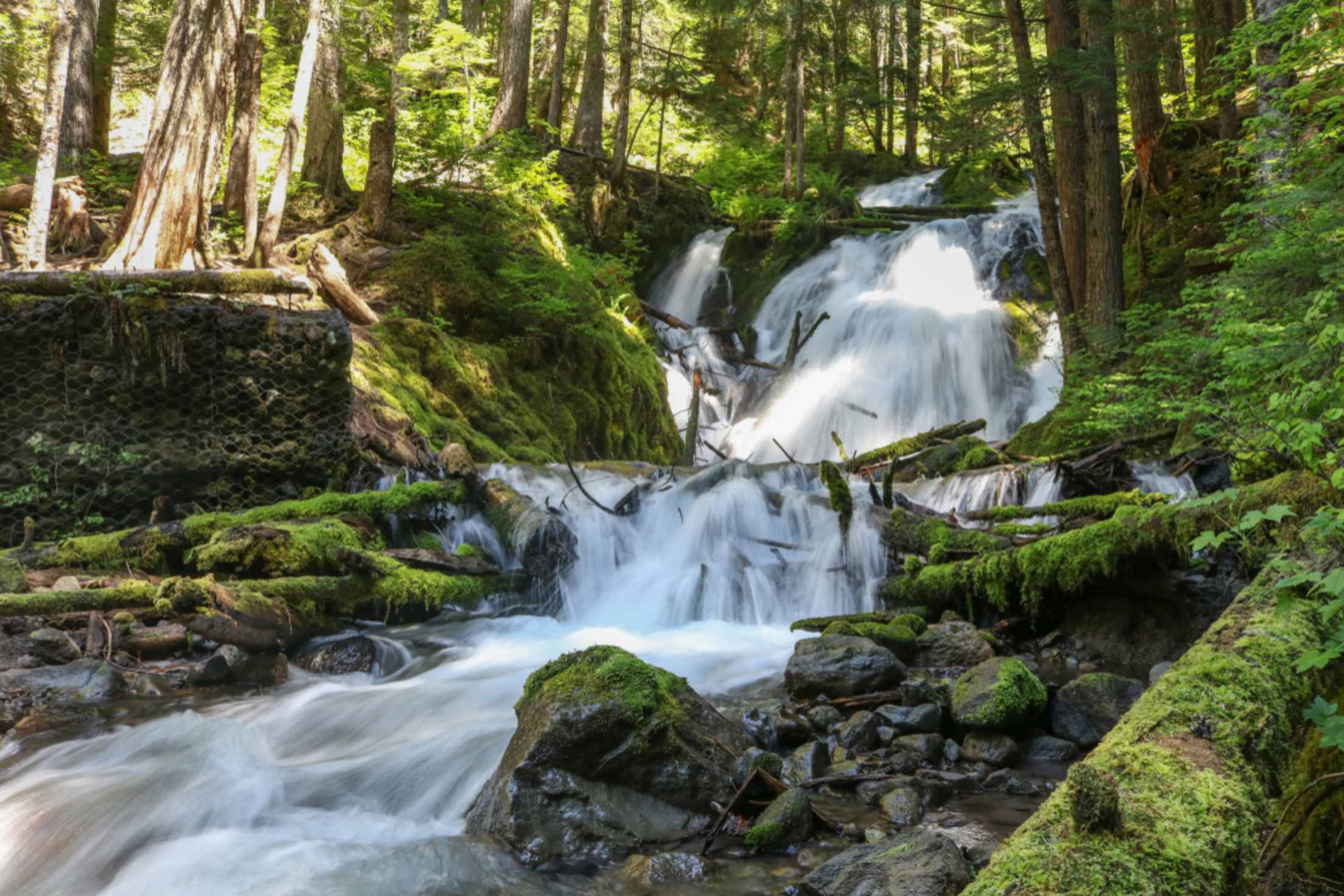
Summer Fun at Oregon's Mount Hood
Find summer’s peak pleasures on a drive up to Oregon’s tallest mountain.

If you're standing in Portland on a clear day, snowcapped Mount Hood is the sightly landmark looming on the horizon. But if you drive 26 miles east, just past the town of Sandy, you’ll discover another face of this dormant volcano. Crossed by rivers, dotted with lakes, and threaded with hiking trails, Mount Hood is more than just its hulking summit. On its slopes you’ll find berry farms, trout ponds, quirky 19th-century villages, and an extraordinary Depression-era lodge. The mountain from a distance is grand; up close it’s even grander.
The most convenient approach from Portland is along Highway 26 and closely tracks Barlow Road, the final and mostly overgrown stretch of the Oregon Trail, which bore the wagons of many of the Willamette Valley’s early settlers. If you’re traveling in the summer, the first essential Mount Hood stop is the Sandercock Blueberry Farm. In July and August, towering bushes, some of them more than 50 years old, produce fat berries that offer a sweet introduction to the mountain’s small-scale glories.
Six miles down the road, the 10 shaded ponds at the Rainbow Trout Farm teem with fish, trout being another local specialty. Rods and bait are free; you pay by the catch, from 75 cents for a six-inch runt to $30 for a lunker.
Serious anglers, and anyone who loves to hike, will feel the draw of Mount Hood’s backcountry rivers and lakes. From the village of Welches, 46 miles east of Portland, visitors can walk the Old Salmon River Trail for almost two miles along a creek inhabited by native cutthroat trout.
Lined with old-growth fir and wild pink foxglove, the level track hits several good picnic spots. Another pretty hike is the two-mile trail that hugs the shore of Trillium Lake. You’ll pass families of ducks, swatches of delicate white trillium (of course), and patches of wild thimbleberries that produce white blossoms and exquisite fruit May through July.

Hike to Little Zigzag Falls in the Mount Hood National Forest.
One of the easiest hikes on Mount Hood also happens to be the most rewarding. From its trailhead 2.5 miles off Highway 26 on Forest Service Road 39, the path to Little Zigzag Falls snakes alongside a creek for a quarter mile upstream through a cool, mossy canyon. It gets even cooler, in all senses of the word, when you reach the point where the stream leaps down a 41-foot chute among the trees, filling the air with mist.
Motorists pass six tiny villages as they travel up 26: Brightwood, Wemme, Welches, Zigzag, Rhododendron, and Government Camp. The last (and biggest) sprang up on the meadow where a snow-battered convoy of U.S. Army mounted riflemen abandoned some of their wagons in 1849. The area has become much more inviting since then. At the Huckleberry Inn, you can start the day with huckleberry pancakes or end it with huckleberry pie, washed down by a purple huckleberry shake.
Down the street, the Mount Hood Cultural Center and Museum offers exhibits of local history, including a room full of antique skis, and fauna such as a dainty beaver skull and the petite nest of a hummingbird. But the most illuminating display is a tabletop topographic map of the mountain, showing all the dimples and swells and hidden lakes in a landscape that, from the road, can sometimes look like an ocean of evergreens.
You will also gain a deeper appreciation for Mount Hood topography when—not if, when—you drive up to Timberline Lodge, which is as close as most travelers get to the summit, since bagging the 11,239-foot peak requires serious preparation and equipment. Timberline is not just the mountain’s most marvelous piece of architecture, but one of the most remarkable in the Pacific Northwest. And its name Timberline has real meaning: Above the lodge, a few trees struggle to survive; below it stretches the vast blanket of green from which you have just emerged.
The view is dazzling, as is the building. From the outside, the majestic walls resemble a fortress; step inside and it’s a cozy haven. In 1936, the Works Progress Administration hired hundreds of artisans to build and furnish the lodge. Walk up the stairs and you’ll come across a fat pelican carved in a newel post. Passing through the foyer, you find an intricate mosaic of a bear catching a salmon. You may notice the grandeur of the lodge first, but look closer and you discover the magnificent details. Which is a lot like experiencing Mount Hood itself.